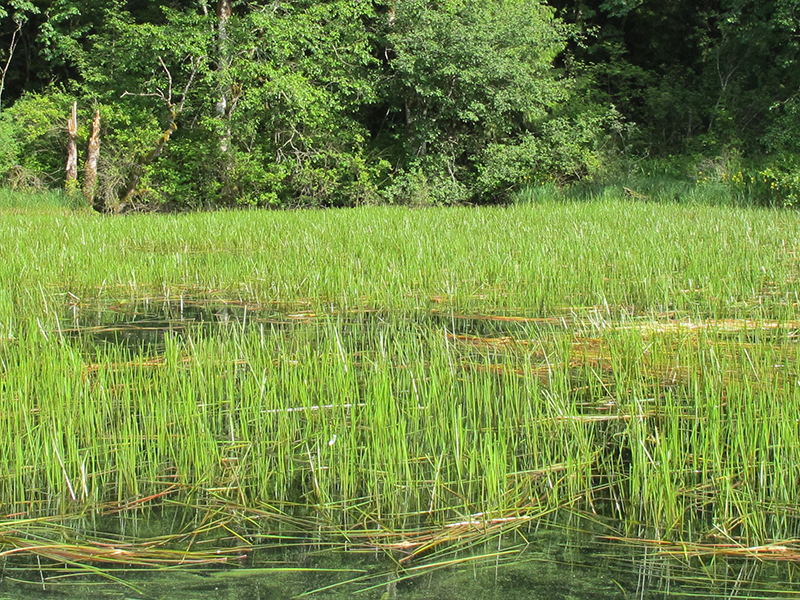
Flowering rush (Butomus umbellatus) is an invasive aquatic plant native to northern Europe and Western Asia. It was first documented in North America in 1897 in Canada’s St. Lawrence River. Flowering rush has since spread to many states and provinces along the U.S. - Canada border, often because of its sale as an ornamental pond plant.
Why it matters
Once it spreads, flowering rush will crowd out native plants, creating a single-species stand. In addition to impacting native plants directly, it destroys the habitats of native animals — including salmon — that depend on native plants for food and shelter. Dense growth in canals and rivers will slow flow, causing irrigation issues and flooding.
Flowering rush provides habitat to the snails that host the swimmer’s itch parasite during part of its lifecycle.
Description
Flowering rush is perennial (lives more than one year) and grows from creeping roots called rhizomes. It thrives as an emergent plant on shore in sand, mud or cobble and can survive to depths of 20 feet or more. Emergent plants may flower in mid-summer, producing 20-50 pink flowers in a ball-like cluster at the end of a flower stalk. Flowering rush varieties in Washington are sterile and do not form seeds.
Flowering rush has triangular leaves that grow from the rhizome. The leaves are erect on emergent plants in shallow water, but are typically flexible on submersed plants. The triangular shape flattens toward the leaf tip, but a distinct mid-rib can be felt even as it flattens. Sometimes emergent leaves twist toward the tip. The leaves are always fibrous, even on submersed plants.
Even when sterile, flowering rush can spread rapidly. The rhizomes break easily and can also form buds that break off. Both fragments and buds can float away to form new plants. Water and wave action, disturbance from boats, and grazing by geese or other animals can break up and spread the rhizomes.
What we’re doing about it
Flowering rush is listed as a Class A noxious weed in Washington, which means that eradication is the goal. It is also included on Washington’s quarantine list; therefore, buying or possessing any part of the plant is prohibited. Currently, populations of flowering rush are known to be present in Whatcom County’s Silver Lake, some seasonal wetlands on Joint Base Lewis-McCord, the Yakima and Columbia Rivers in South Central Washington, the Pend-Oreille River, and the Spokane River from Hangman Creek to Lake Roosevelt. While concerned parties are trying to slow the plant’s spread in all these areas, control of flowering rush is proving difficult. Herbicide trials in Washington, Montana, Idaho, and Minnesota have met with some success. However, in river systems and large reservoirs, the main control method used so far is hand pulling, which is time- and cost-intensive. Consequently, the populations of flowering rush in Washington continue to spread.
For flowering rush, and other types of noxious weeds, Ecology administers a general permit that helps lake managers safely control aquatic plants and algae. We ensure that the options lake managers have for controling invasive species protect water quality.
What you can do
There are native plants that look similar to flowering rush, especially when the plants are not flowering. It is best to contact your local county weed board if you think you have flowering rush. Learn more at Washington Invasive Species Council website and their ways to help document.
Jenifer Parsons is an aquatic plant specialist with our Environmental Assessment Program. She has been at the forefront of Washington’s fight against invasive plants for the past 26 years. She’ll continue sharing information about our state’s least wanted guests on a monthly basis until her field season starts again in May.





